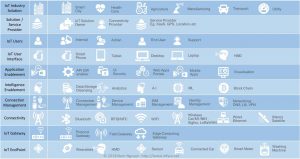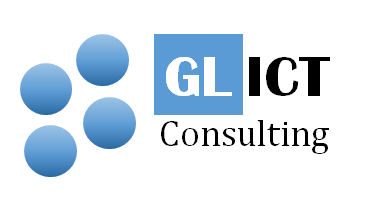
The “Internet of Things” (IoT) is a very broad definition that refers to the plethora of sensors, controllers, devices etc. that will be connected over the Internet for supporting a multitude of applications that are expected to benefit consumers and industries. This means that there is a very wide range of choices that need to be made in terms of the components that will comprise an IoT solution. INFYRA (www.infyra.net), an IoT Consultancy that specialises in providing guidance on developing IoT solutions, has developed a comprehensive IoT Reference Framework that helps to address this multitude of choices and decisions that organisations need to make during the various project stages of planning, designing and deploying IoT solutions.

So if you are sponsoring or leading an IoT project you need to consider 10 key questions in order to steer your project team towards a successful outcome:
1. Which industry are you planning your IoT project for?
Framing your solution for your target industry (e.g. Smart Cities, Health Care, Agriculture, Manufacturing, Automotive, Transportation, Education, Utilities, etc.) will help set the context and therefore help to guide downstream choices & decisions on how the solution should be developed.
2. Who are the IoT suppliers and service providers?
This aspect may require review throughout the project as it will determine the operations that will support your IoT solution as well as ecosystem providers such as network, platform services, device provisioning and support etc.
3. Who are the intended users of your IoT solution?
Users can be categorised as Primary or Secondary. Primary users are IoT solution owners which act upon the information produced by the solution. Secondary users are those who operate and manage the solution, or have a business interest in the solution. The type of users of course varies depending on each IoT use case.
4. What is required for the User Interface design?
This will determine how users interact with the IoT solution. Often, the UI is a combination of hardware and software applications, e.g. commercially available ‘smart’ devices such as smart phones, tablets, laptop computers or Headset Mounted Display (e.g. HMD for Virtual Reality Applications). There could also be specially designed devices such as those found in industrial applications.
5. How will your IoT solution be developed?
This is a fundamental consideration as this forms that basis of your IoT platform which includes key functions and services that are necessary to create value from the solution, some examples of which include:
– Rule engine & event management
– User Interface Security
– Data Encryption Support
– Developer Support, SDK
– API enabler
– Web and Mobile Application building and enablement
– Data Visualisation Support
– Endpoint Specific API
– Endpoint Specific SDK
6. How will your IoT solution make use of data?
Technologies such as Analytics, Artificial Intelligence, Machine Learning, Deep Learning, Block Chain are key to creating business value by enabling informed decision making and business process automation leading to improved productivity.
7. How will your IoT solution manage connections securely?
The management of networks, protocols, device gateways, IDs and User Authentication are key to the security of your IoT platform. Key functions that need consideration include:
– Device Registration & Connection support
– Device Configuration support
– Device authentication
– Device Identity Management
– Device SIM Management
– VPN Support
– DNS Support
– Protocol support for MQTT, HTTP, CoAP, SSL, SSH, TSL
– Load balancing and routing support
– REST API support
– Over The Air (OTA) update support
8. Which network interfaces and protocols will your IoT solution use?
Connectivity technologies include Bluetooth, WiFi, NFC, RFID, Ethernet, 6LoWPAN, LoRaWAN, Sigfox, 3G/4G LTE, LTE-M (Cat-M1), NB-IoT (Cat-NB1) and other proprietary radio technologies. Consideration should also be given to the access network that IoT client devices will use which could be WiFi, Ethernet, 3G/4G LTE etc.
9. How will IoT device communications with your IoT application be managed?
Depending on the solution, key considerations include:
– What the aggregation point will be for a group of sensors and actuators for coordinating the connectivity between these devices to external networks
– Use of a protocol gateway that performs protocol conversion between devices and the core platform; and/or
– Use of an Edge Computing Device that can perform analytics, make time sensitive decisions, enforce security, etc. This would be particularly relevant for meshed networks
10. What are the end points of your IoT solution?
An IoT endpoint can be defined as a data measurement/collection point (in a device) such as a sensor. IoT devices can range from single endpoint type, e.g. a simple sensor, to a smart device with more than one sensor, or a very complex ‘thing’ that can have multiple endpoints and perform complex data measurement functions, such as those found in an autonomous vehicle.
More information on how to plan, design and deploy IoT solutions can be found at INFYRA (www.infyra.net).

I’m really enjoying the theme/design of your website. Do you ever run into any browser
compatibility problems? A few of my blog readers have complained
about my blog not operating correctly in Explorer
but looks great in Safari. Do you have any ideas to help fix this problem?
What’s up, just wanted to say, I loved this blog post.
It was practical. Keep on posting!